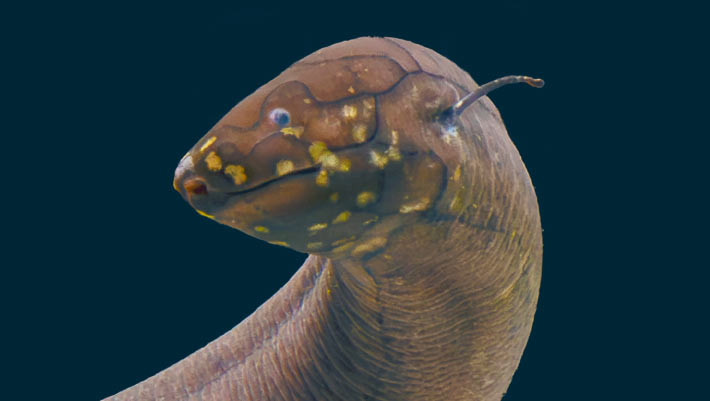Researchers from the University of Konstanz and elsewhere have sequenced the genomes of the African (Protopterus annectens) and South American lungfishes (Lepidosiren paradoxa). The South American lungfish’s genome (about 91 gigabases, roughly 30 times the human genome) is the largest animal genome sequenced so far and more than twice the size of the Australian (Neoceratodus forsteri) and African lungfishes.
The South American lungfish (Lepidosiren paradoxa). Image credit: Katherine Seghers, Louisiana State University.
Lungfish — freshwater vertebrates belonging to the order Dipnoi — have persisted for 400 million years from the Devonian period to present day.
Some consider lungfish as ‘living fossils’ since their morphology barely changed over eons.
They share with the land-dwelling vertebrates the ability to breathe air though lungs that are similar to ours.
Of the only six living lungfish species four live in Africa, one in South America, and one in Australia.
“It seems that evolution has forgotten them, because these ancient ‘living fossils’ still look very much like their ancestors,” said University of Konstanz biologist Axel Meyer and colleagues.
“Since our genetic material, the DNA, is made up of nucleobases and the sequence of these nucleobases contains the actual genetic information, a comparative analysis of the lungfish genomes is only possible with knowledge of their complete sequences.”
“We already knew that the genomes of lungfish are huge, but how gigantic they really are and what can be learned from them was not clear, until now,” they added.
“Accordingly, the sequencing of the lungfish genomes was very labor intensive and complicated from both a technical and a bioinformatic perspective.”
In their new research, the scientists sequenced the genomes of the African and South American lungfishes.
“With 91 gigabases (in other words, 91 billion bases), the DNA of the South American species is the largest of all animal genomes and more than twice as large as the genome of the previous record holder, the Australian lungfish,” Dr. Meyer said.
“18 of the 19 chromosomes of the South American lungfish are each individually larger than the entire human genome with its almost 3 billion bases.”
The previously largest genome sequence of the Australian lungfish had been sequenced by the same team.
“Autonomous transposons are responsible for the fact that the lungfish genome has ballooned to this enormous size over time,” the authors said.
“These are DNA sequences that ‘replicate’ and then change their position in the genome, which in turn causes the genome to grow.”
“Although this occurs in other organisms as well, the analyses showed that the expansion rate of the genome of the South American lungfish is by far the fastest on record: every 10 million years in the past, its genome has grown by the size of the entire human genome.”
“And it continues to grow. We’ve found evidence that the transposons responsible are still active.”
“We identified the mechanism for this gigantic genome growth: the extreme expansion is at least partially due to very low piRNA abundance.”
“This type of RNA is part of a molecular mechanism that normally silences transposons.”
The team’s paper was published in the journal Nature.
_____
M. Schartl et al. The genomes of all lungfish inform on genome expansion and tetrapod evolution. Nature, published online August 14, 2024; doi: 10.1038/s41586-024-07830-1

